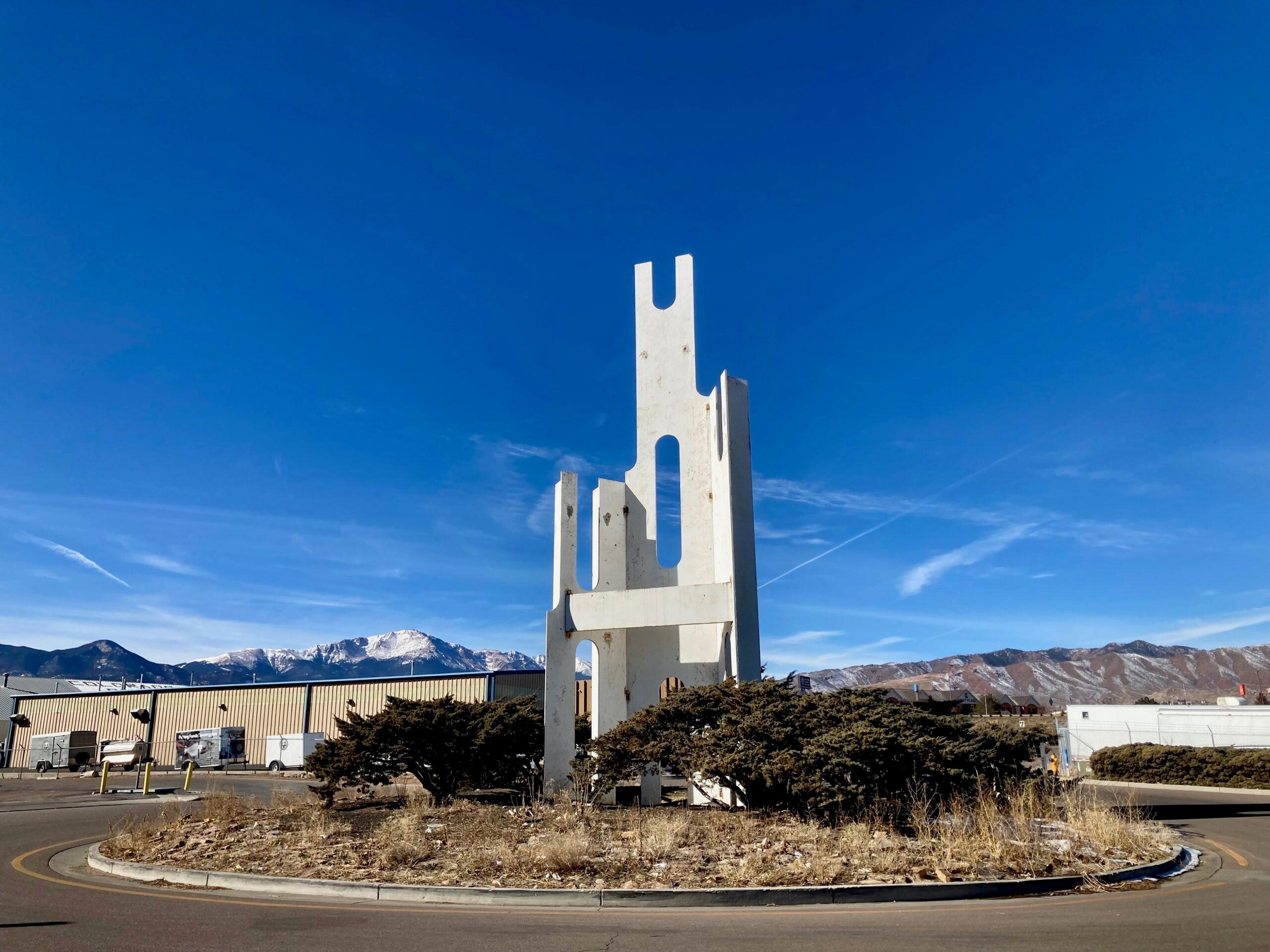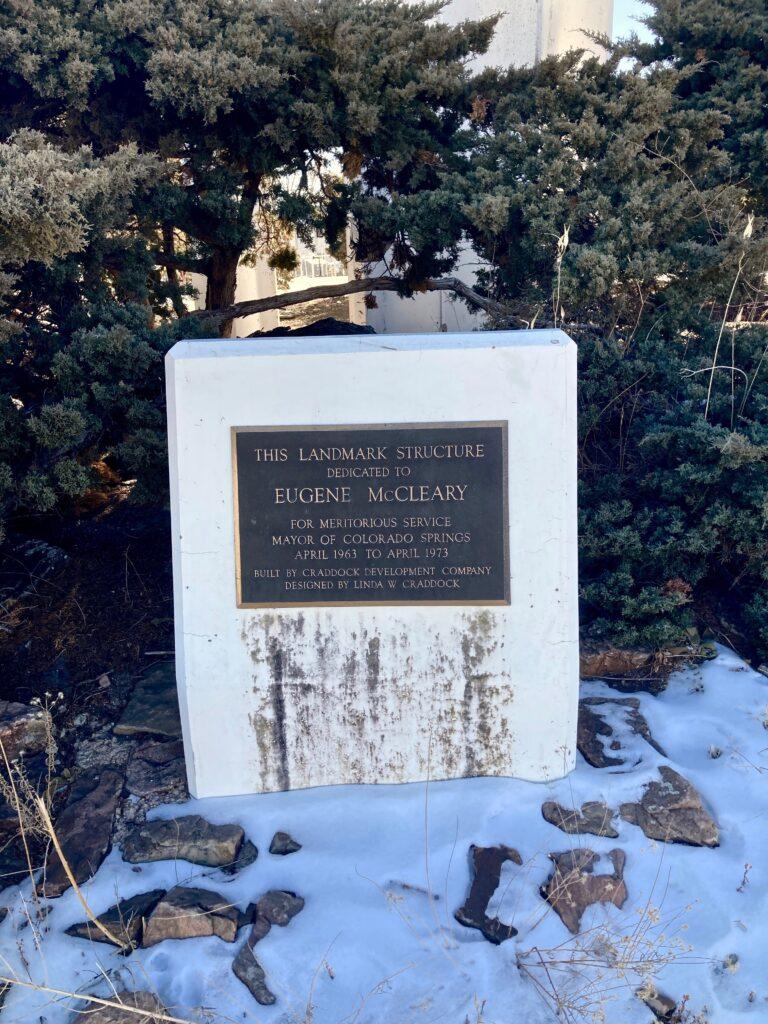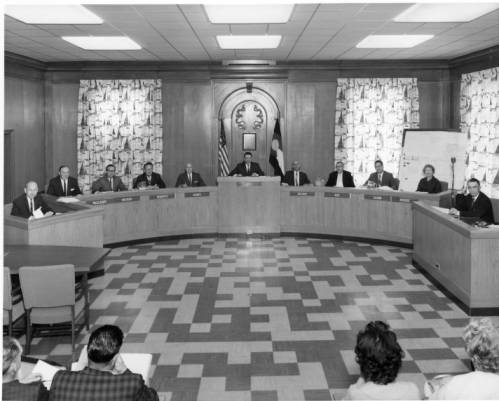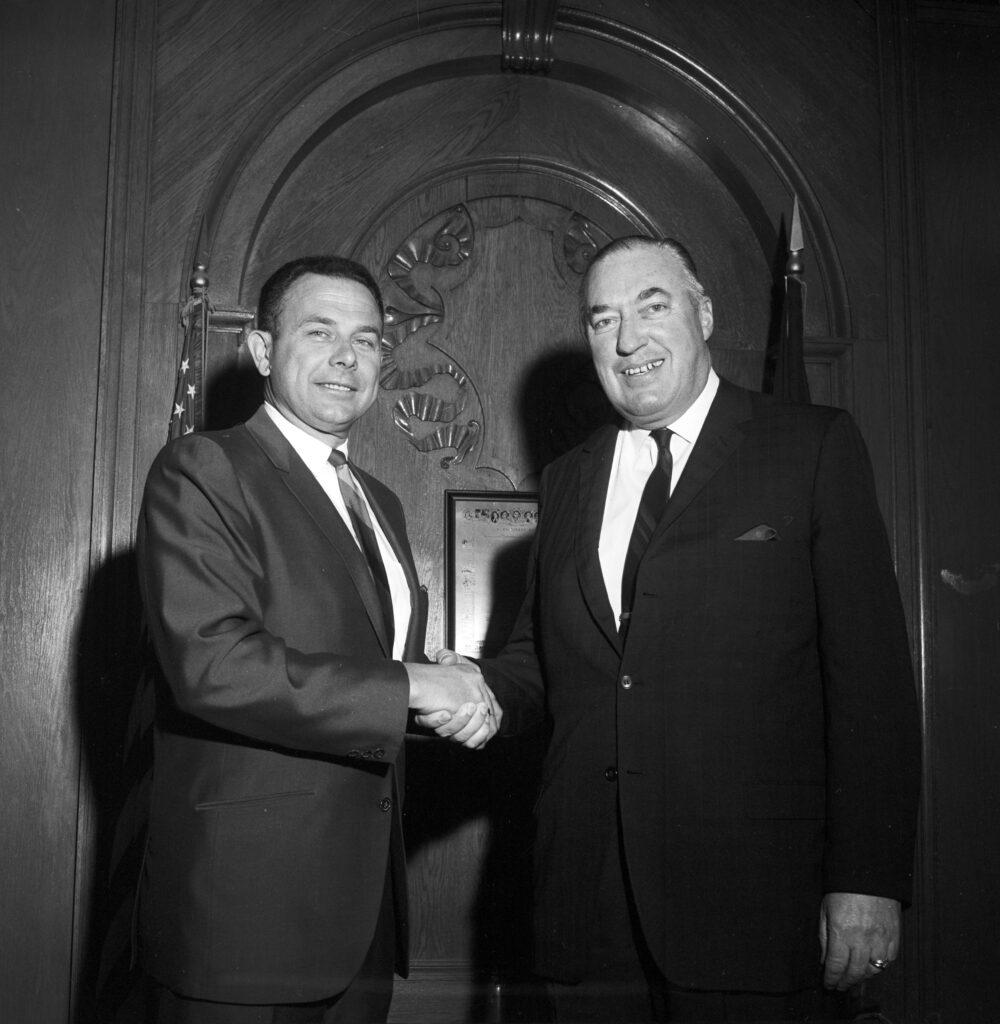
Tucked away in a light industrial area of Colorado Springs, a couple of blocks from the busy interchange between Interstate 25 and Garden of the Gods Road, stands a monolithic monument to a former mayor of the city. It's a little weather-beaten and time-worn. Maybe even a little forgotten.
Thousands of cars pass by daily just a couple of blocks away, but this monument is off the beaten path enough that drivers likely wouldn't notice it.
"Most people don't know it exists," said Leah Davis Witherow of the Pioneers Museum. "And if they see it, they are also driving by so they don't stop to even read the plaque."
The said marker, in the middle of one of the first roundabouts in the city, honors Mayor Eugene McCleary.

Even though the plaque says McCleary was mayor for ten years, he actually only held the position from 1967-1973. At the time, city council chose the mayor. Before that, he served on city council.
During the 1960s Garden of the Gods Road as we know it today didn't really exist, according to Witherow.
"We often think that things developed in Colorado Springs–places, roads, businesses, parts of town–just developed naturally," she said. "But these were all choices made by people at the time."
McCleary is one of those people. Witherow credits him with shepherding a lot of change and growth. So while the monument may appear out of place, it's actually in the right area, she said.
"They improved (Garden of the Gods Road) and that was where lots of tech industries went in like Hewlett Packard, Ampex, and so many others."
According to Witherow's records, McCleary seemingly worked day and night throughout his adult life. He was connected with numerous groups and served on the boards of many non-profit organizations around town, including the Fine Arts Center and Cheyenne Mountain Zoo.
McCleary and two others also co-founded the local chapter of the Urban League "as a major civil rights organization in the El Paso County area in 1964," said JJ Frazier. Frazier chairs the board for Urbanites Leading the Pikes Peak Region, which is what the local chapter of the Urban League became in 2012.
"Their specific aim at that time was to combat increasing economic and educational disparities that existed within our community," she said.

The group continues much of the work of the original Urban League, Frazier said, like providing scholarships for high school seniors, referral services for housing assistance and SNAP benefits, for example.
McCleary was well respected and admired throughout the city, according to Witherow, even if people didn't always agree with him. Growth, she said, was as much of a topic and concern then as it is now.
"He defended growth because he said he wanted to build where his children would want to stay," she said. "Eugene McCleary was mayor of Colorado Springs at a time when there was a tremendous amount of optimism about what the future held, and they were building aggressively toward that optimism."
And by one metric, Colorado Springs was growing faster then than it is now.

"In 1972, 9,000 building permits were issued for homes in Colorado Springs," Witherow said. "Last year, we built 5,000 homes in Colorado Springs."
McCleary did have one regret about his tenure as mayor, though. And that, Witherow said, was Academy Boulevard.
“Because it was meant to be a high-traffic funnel for cars to move north and south through Colorado Springs,” she said. “But he said as soon as we approved that first curb cut then how could we say no to all the other curb cuts. Businesses moved out of downtown and to the east.”
These days, there's a city park named in McCleary’s honor that opened several years ago on the northeast side of Colorado Springs. It's in a part of the city that wasn't even a part of the city during his time as mayor.
More Colorado Springs stories
- What do you call people from Colorado Springs? This is what we found out
- Downtown Colorado Springs has grown over the last few years. Now, officials say more development is on the horizon
- Cheyenne Mountain Zoo in Colorado Springs launches a giraffe care and conservation program








